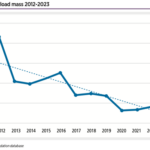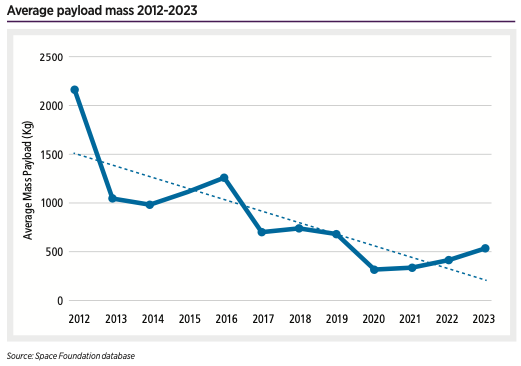2013
Cumulative human spaceflight, 1961–March 18, 2024
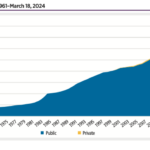
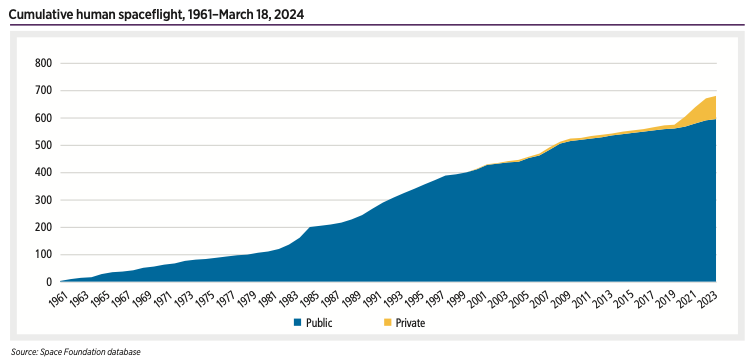
Human spaceflight activity is off to a rapid pace in 2024 with a private Axiom mission, a public ISS mission, and a private Virgin Galactic mission taking flight in the first nine weeks of the year.
NASA share of U.S. federal budget, 1959-2025
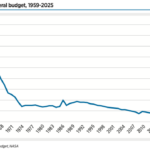
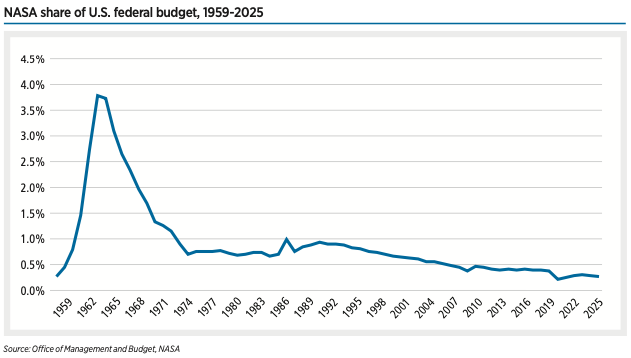
The overall Pentagon budget proposal for 2025 is $850 billion, $8 billion more than its 2024 request.
Satellites lost by launch operator country and type, 2003-2023
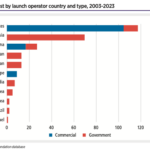
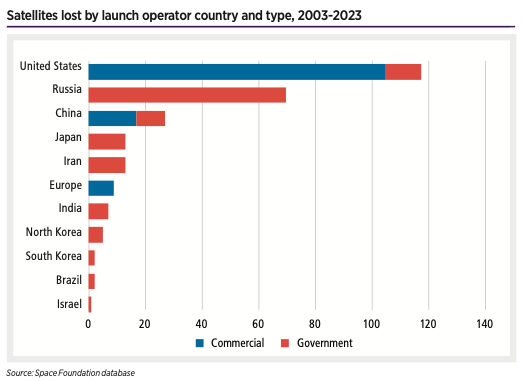
Despite the rising number of lost payloads, satellite operators are getting better at mitigating the harm done to their mission by a launch failure.
Average payload mass 2012-2023
Japanese Government Space Spending, 2013-2023
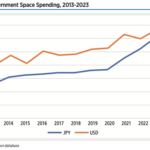
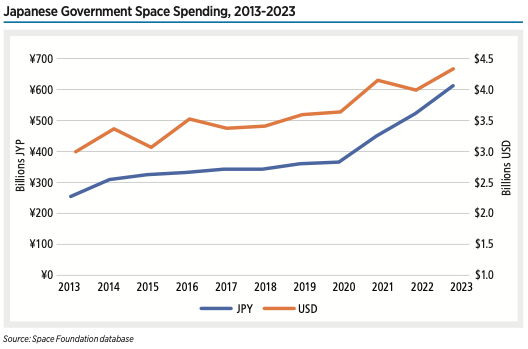
Japan’s space spending spans seven ministries and totaled ¥612 billion (UD$4.3 billion) in 2023. This budget has grown 68% since 2020 as the nation expands its civil and military space programs. The Ministry of Education, Culture, Sports, Science, and Technology (MEXT) — which houses JAXA — typically receives the majority of space-related funding.
Launch Attempts and Deployed Payloads, 1983-2022
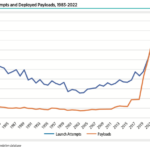
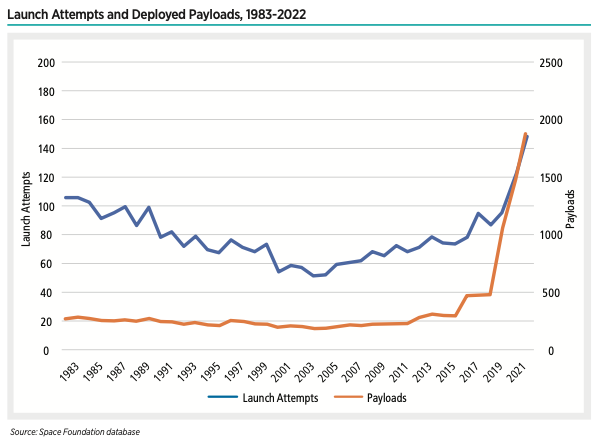
Two items stand out as primary examples of astronomers’ concerns: the SpaceX Starlink constellation due to its number of satellites and AST SpaceMobile’s BlueWalker 3 satellite due to its size — 693 square feet6 — which ranks as the largest commercial communications array in space.
Orbital Launch Attempts, 1957-2023
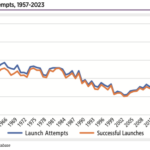

The number of U.S. launch at- tempts climbed from 87 in 2022 to 116 last year. The number of U.S. launches has more than doubled since 2021, which saw 51 launch attempts.
Leap Second Adjustments to UTC, Navigation Satellites, 1972-2023
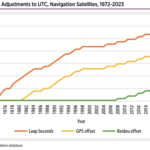

But every technological leap in clock accuracy can’t overcome the wobbly planet’s ability to throw off timing standards. Using leap seconds, the International Bureau of Weights and Measures has changed clocks to match the astronomical time on Earth 27 times.
Japanese Launch Attempts, 2013-2023


One problem area for Japan is the possibility of a gap in reliable access to space. The nation is one of 10 capable of orbital launch, but its launch activity is relativity infrequent.
Japanese Workforce by Sector, 2005-2021
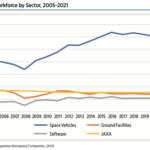

JAXA employed 1,580 individuals at the beginning of 2023. Out of this total, 1,123 (71%) are engineering and research employees. Even though Japan as a whole is struggling with an aging population, JAXA’s age demographics are more normally distributed than many other nation’s space agencies.
